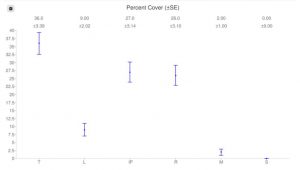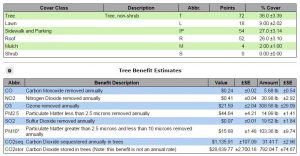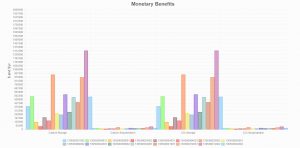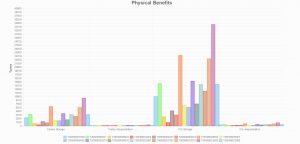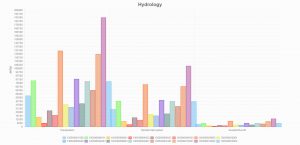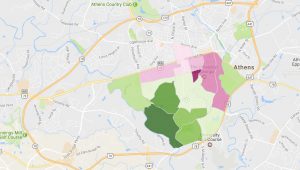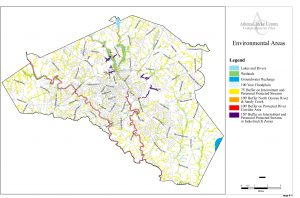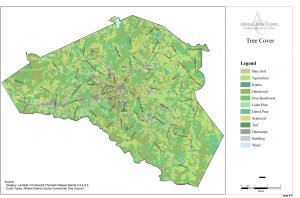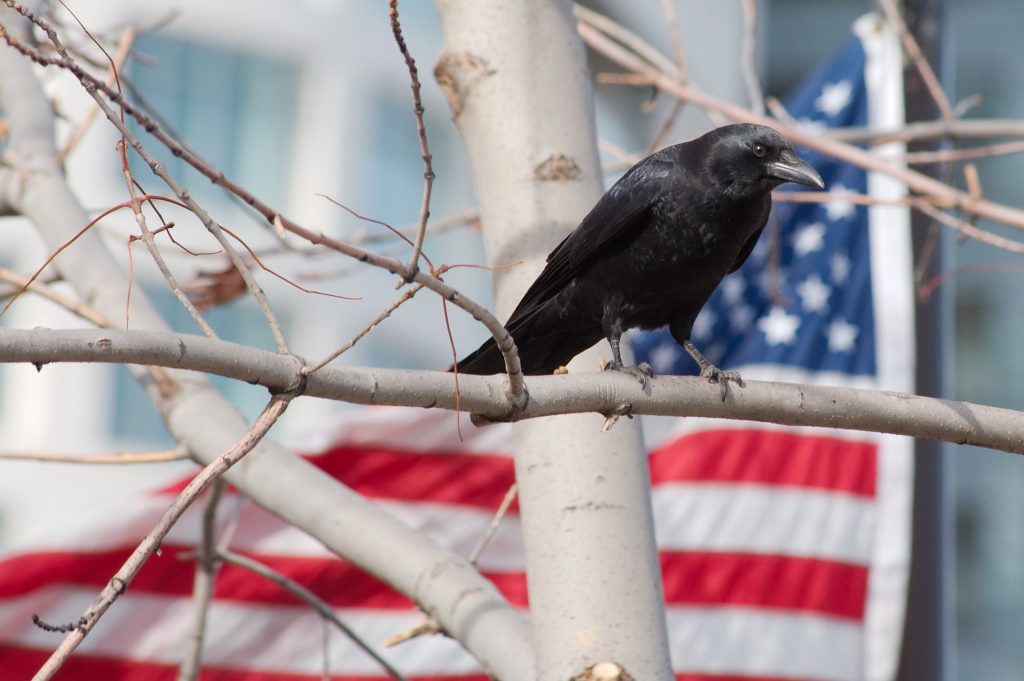Above: iTree Canopy Report of North Campus using 200 points with the vectors: Tree, Lawn, Parking, Roof, Mulch, and Shrub.
North Campus
By increasing tree canopy on North Campus, ecosystem and walkability factors could be improved. Tree additions, as we have previously learned, provide several improvements to microclimate and ecosystem services such as: improved hydrology, increased water infiltration, air cooling, and habitat formation, which will be expanded upon at the end of this page. Although these are all very beneficial effects, it should be noted that adding more trees could provide less comfortable winters and reduced sidewalk/lawn space for people and recreation. If the goal of a project on North Campus was to increase hydrology and infiltration, the installation of porous concrete on large, surface parking lots could be implemented. Potential development sites could be the remaining handicapped lot on Herty Drive or the N08 parking lot directly behind the Jackson Street Building. A permeable concrete would allow for water to infiltration on these large surface lots which would otherwise be completely impervious.
Athens – Southeast Quadrant within the Loop
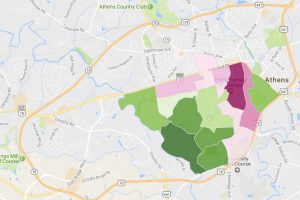


45% Tree Stock – 20% Canopy per Capita – 35% Population Density
The ideal scenario described above is for the Southeast corner of Athens within the perimeter loop. It encompass Downtown, the UGA Campus, Milledge, and Five Points. The scenario uses three factors to spread trees around the area. Tree stock equalizes the spread of trees around the area. Canopy per capita describes placing trees closely equal to the number of local residents. Population density prioritizes the planting of trees where the most people reside.
The priority of percentages above were chosen in attempt to balance proportional placement and usage to create a walkable landscape. Trees should be spread around an area as walkability is affected by microclimates and what trees are immediately nearby, stocking trees in a single area would create a nice park but not a nice sidewalk. Population density is prioritized above perfectly proportional tree representation as a single tree would be experienced by more people. This factor would allow for trees to be placed in already walkable communities. However, canopy per capita did not trail far behind in priority. Although it is not the greatest factor, it is ranked fairly close in an attempt to place trees in places where people reside yet lack a walkable landscape. The ideal scenario outcome is to create an area which supports the already walkable communities but promotes the development of a unified walkable landscape.
Habitat – American Crow – Corvus brachyrhynchos
The American Crow is a hardy, adaptable scavenging bird. As long as there is a tree, Corvus brachyrhynchos can thrive. It can live anywhere, urban to suburban to woodland. Due to its wide range of habitat and ability to adapt to its surrounding area, the American Crow is one of the most common species of bird in the United States.
Corvus brachyrhynchos can live anywhere within the Athens perimeter loop. In fact, it can be almost guaranteed that every resident within the Athens area has seen these birds on a daily basis. The ideal landscape scenario described above would allow for this bird to thrive, but honestly, the American Crow would flourish in just about any situation where trees are being planted. As previously stated, the crow can live in almost any landscape but is especially known for doing well in an urban setting. Perhaps increasing density of trees to promote breeding and allowing for scavenging in open areas with less trees could help the crow population. However, Corvus brachyrhynchos probably does not need any help at all. For other birds in the Athens area, my tree planting may potentially be ideal for habitat connectivity. By spreading trees around as intended, the trees could provided corridors to larger patches of habitat, allowing for refuge in the city while they fly to the more forested areas within or a little outside the Loop. Perhaps prioritizing more tree stocking in a single area would be better for birds as it would allow for a more forest-like area a bit more detached from streets and urbanity, allowing for safe breeding and habitat patches.
